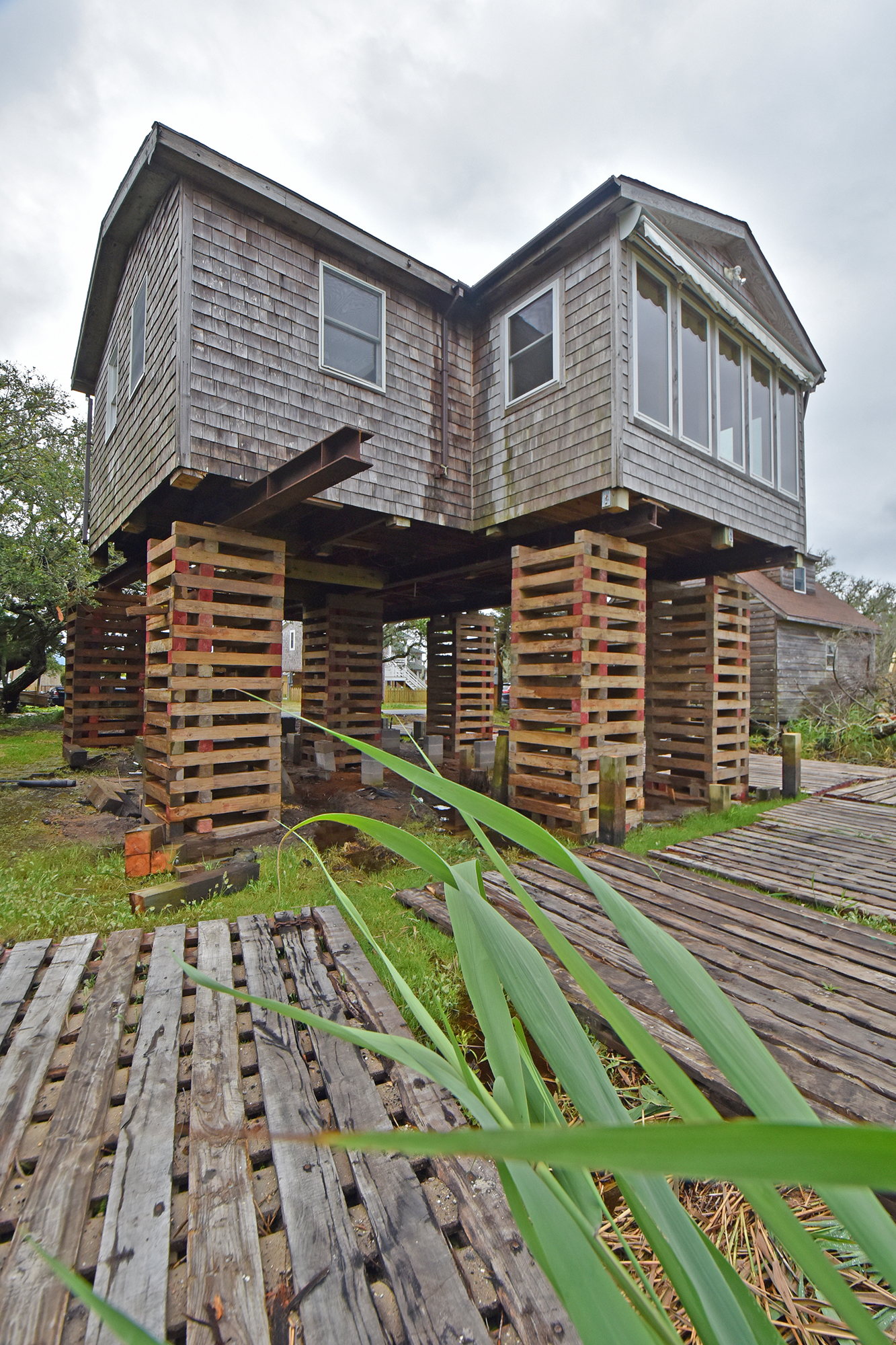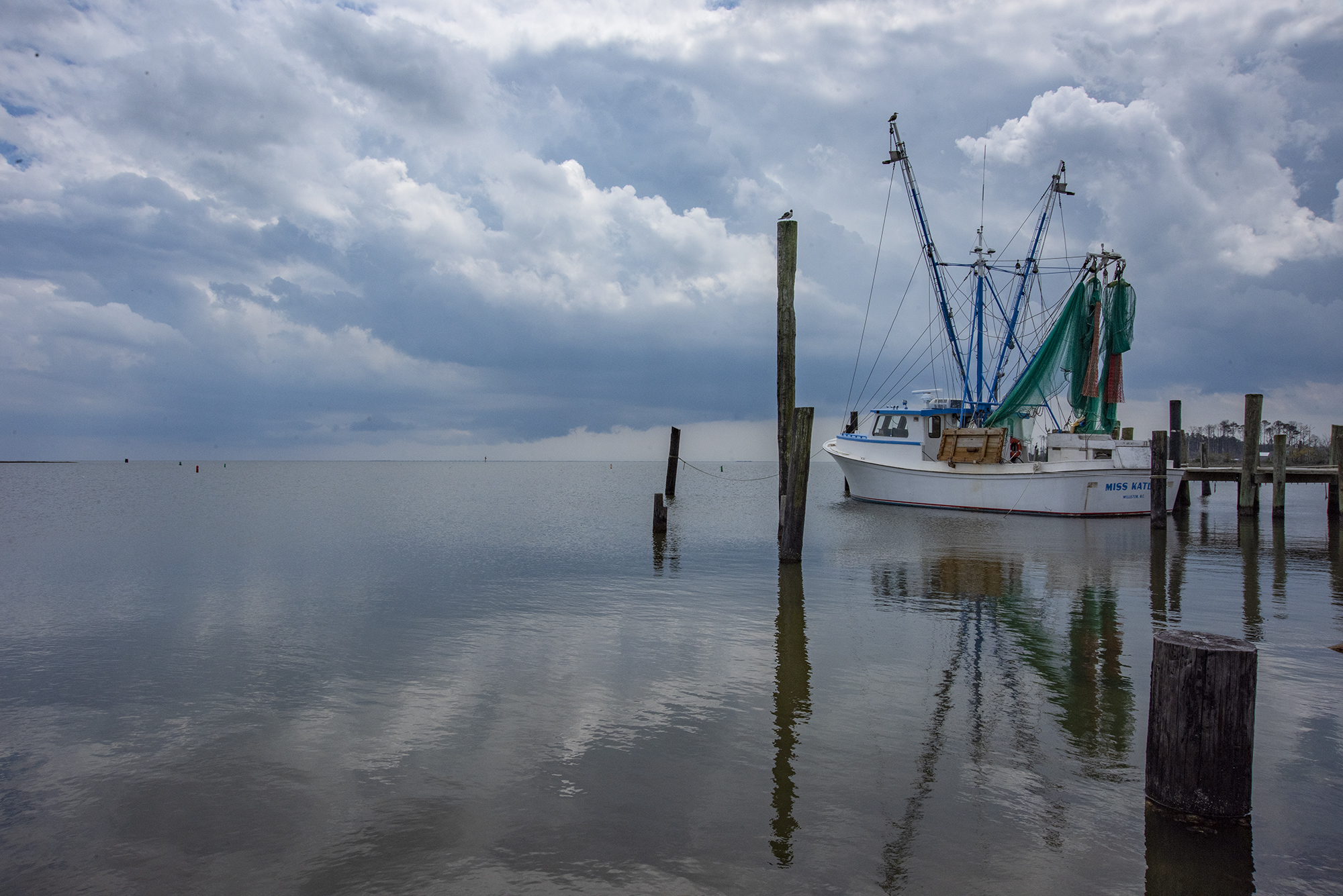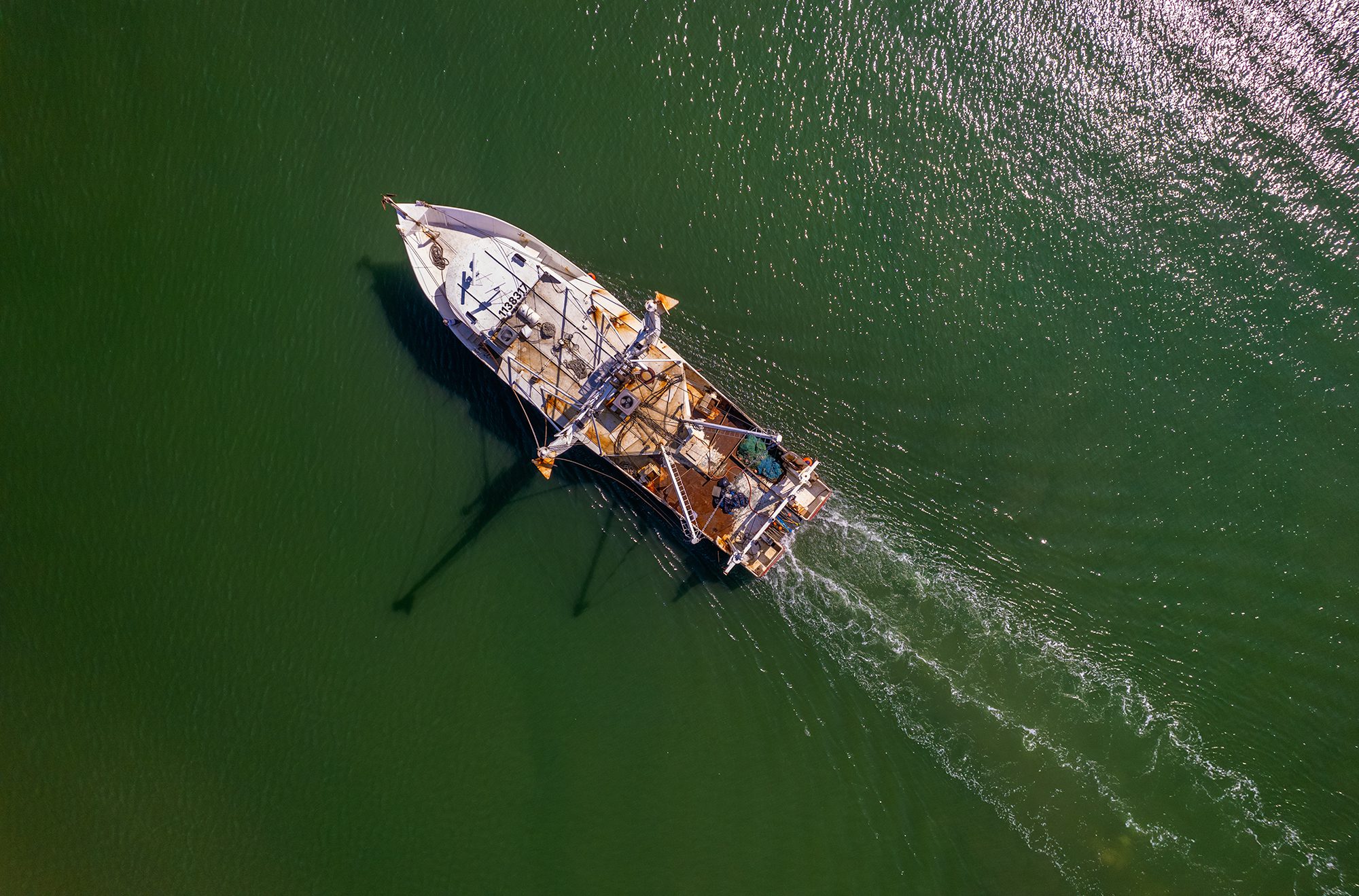
Ocracoke Island has long been famous for its charming cottages with front porches and flowers in tiny yards, tucked alongside narrow, tree-shaded roads winding through the village. But there’s nothing charming about being slammed with 7 feet of flood water.
In the wake of the devastation in September 2019 from Hurricane Dorian, Hyde County is seeking funding from the Federal Emergency Management Agency to elevate 114 houses in Ocracoke Village to about 8 feet above ground elevation, a proactive measure that will provide more resilience to the historic fishing community and popular tourist destination.
Supporter Spotlight
“It will look a lot different,” county manager Kris Noble said in a recent interview.
But Noble knew from the moment she saw Dorian’s wrath from the air what needed to happen for Ocracoke to recover: Its buildings had to be raised above flood waters.
“As we were flying over, it was basically just water and rooftops,” the manager recalled of the day-after storm scene. “The only dry land was the ball field.”
Noble, a Hyde County native, remembers when Swan Quarter, the county seat on the mainland, was flooded nearly as badly during Hurricane Isabel in 2003, when the courthouse, the firehouse and numerous homes in the unincorporated community — all barely above sea level – were inundated. Since then, she said, residents exhausted by fear of flooding, adapted to the changes in the interest of safety.
“Now when you ride through the village of Swan Quarter,” Noble said, “you see lots of elevated houses.”
Supporter Spotlight
Ocracoke Village, situated on the southern end of the Outer Banks between Pamlico Sound and the Atlantic Ocean, has had its share of storm damage over its centuries-long history. But no one alive today has ever seen the water come up so high so fast.
Nearly every single property, including vehicles, suffered flood damage. Restaurants, inns, bed-and-breakfasts, motels, retail stores, outdoor recreational sites — all were affected. Cape Hatteras National Seashore had severe damage to its staff housing and National Park Service infrastructure, although fortunately the park’s famous Ocracoke ponies escaped unharmed.
“The ponies are like the people here,” Noble said. “They’re resilient.”
The state Department of Transportation also had damage to its ferry infrastructure and N.C. 12, the sole highway on the island, was severed and closed until Thanksgiving.
Noble said that the county had estimated that there was $30 million in property damages, not including the park service and NCDOT. After herculean cleanup efforts and complications from COVID-19, the village was able to recover enough to reopen to visitors this summer. Still, she said, between the losses in property and revenue and safety restrictions due to the pandemic, there are a number of businesses and attractions that have closed for good or have had to delay reopening.
Still, she said, the community has endured months of terrible stress and managed to restore and maintain much of the village’s character.
“The face is changing, but the face is beautiful,” Noble said. “It’s more attractive. It’s just been a really hard process.”
Chris Hilbert, with Wilmington-based Holland Consulting Planners, or HCP, said in an interview that he had first worked with Hyde County on housing mitigation work about 20 years ago. Often, he said, it can take two to five years to get the funding from FEMA. In the meantime, some homeowners find alternate sources of money to fix up their homes.
After Hurricane Isabel in 2003, 150 applications were submitted for grants to elevate or acquire properties on the mainland. Acquisitions are less common because of the high property values. Of the 50 applicants that were approved, 29 or so were elevated, including Noble’s house, he said. Mainland Hyde County, especially Swan Quarter, had also been hit hard in Hurricane Floyd in 1999, Hilbert explained. So, with damages inflicted again during Isabel, the repetitive losses made the grant money flow.
Additional applications were submitted by Hyde County in 2011 after Hurricane Irene, which flooded the Scranton area of the mainland. Since then, about 20 homes were mitigated, he said.
Then Hurricane Matthew came through in 2016, but Ocracoke felt the impact instead of the mainland. Although 12 applications for mitigation were submitted to FEMA, he said, the agency never got around to telling the county if it was even eligible.
Next, in 2018 there was Hurricane Florence, which bypassed Ocracoke for the mainland, again near Scranton. The county hired HCP in January 2019 to help with the application process.
Hilbert said he was in the process of trying to secure FEMA grants for Florence-damaged properties when Hurricane Dorian hit Ocracoke. A letter of interest had already been submitted to the agency by Hyde County, which turned out to be fortunate because it allowed the county to immediately set up an application process for Dorian mitigation for island properties.
Since the Florence applicants had not yet been submitted to the agency, N.C. Emergency Management, which administers FEMA funding in the state, was able to add Hyde County’s Dorian applications to the Florence applications.
An HCP housing inspector went to the island within a week to assess the situation and help the county secure state disaster recovery funds, Hilbert said June 30 in an email. The consultant returned later to photograph properties for the applications and provided a base map.
Hilbert said that the housing mitigation grants require approval from the state and FEMA, which explains why numerous locations are still dealing with Matthew grants.
“The really positive news is the State is finishing their review only 9 months after the actual event,” he wrote, “so the FEMA process must begin now, which will include environmental review and approval of 75% funding. The State will then pick up the other 25%.”
Hilbert said he can’t predict how many applicants will be approved, but in general, FEMA has been prioritizing lowest elevations and repetitive-loss properties. With many cottages at ground level, that should make Ocracoke a prime candidate.
Ocracoke, which has a year-round population of about 900, is not alone in having so many homes at sea level, he said. Between Hurricane Hazel in 1955 and Hurricane Fran in 1996, there were not many big storms on the East Coast. But Hazel did inspire a lot of construction of cinder block on slab houses, such as those in Atlantic Beach and Carolina Beach. The thinking was they could withstand flood waters, except they were still built barely above ground level. Even after Floyd’s massive flooding, people were still thinking it was a “once-in-a-lifetime” event, Hilbert said.
New houses on Ocracoke started being built on pilings in the 1990s, but having many more houses elevated will undoubtedly change the cozy feel in the village. The trade off, of course, is safety.
“That’s really what Ocracoke is looking at,” Hilbert said in the interview. “It’ll be fairly transformative.”
Considering the island’s location on the edge of the continent sticking out into the Atlantic Ocean, he said, Ocracoke has been fairly lucky to have dodged the bullet for as long as it did. And even when villagers wanted to raise their homes, until recently, there was no funding available to help them.
“It’s been a long time coming, but it’s almost been just a waiting game,” he said. “There was no government program that could provide money until they could show the need.”
Amy Howard, a native islander who manages her family’s business, The Village Craftsmen, on Howard Street, said that every one of the family’s buildings flooded to some extent, but her house on the corner got hurt the worst.
Built by her grandfather in 1957, Howard said the house was stripped down to three walls and subfloor. It has now been rebuilt and is standing 12 1/2 feet in the air, waiting to be permanently placed on pilings 8 feet above ground level.
But Howard, 48, said that while it’s a relief to not have to worry about flooding, the idea of elevated houses takes some getting used to “because I love the little low houses … running up to somebody on the porch … that community feel.”
The fact is, she said, most Ocracoke villagers know the risks of living on their island, and don’t see it as any more dangerous than living in other places prone to earthquakes, tornadoes, landslides or wildfires.
“I think most of us feel fairly optimistic,” she said.
Noble agreed that the community is looking forward, not back.
And if another storm comes this hurricane season?
“We’ll batten down the hatches,” she said. “I pray we get a break for a few years.”







